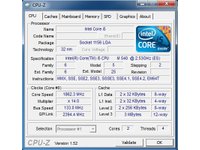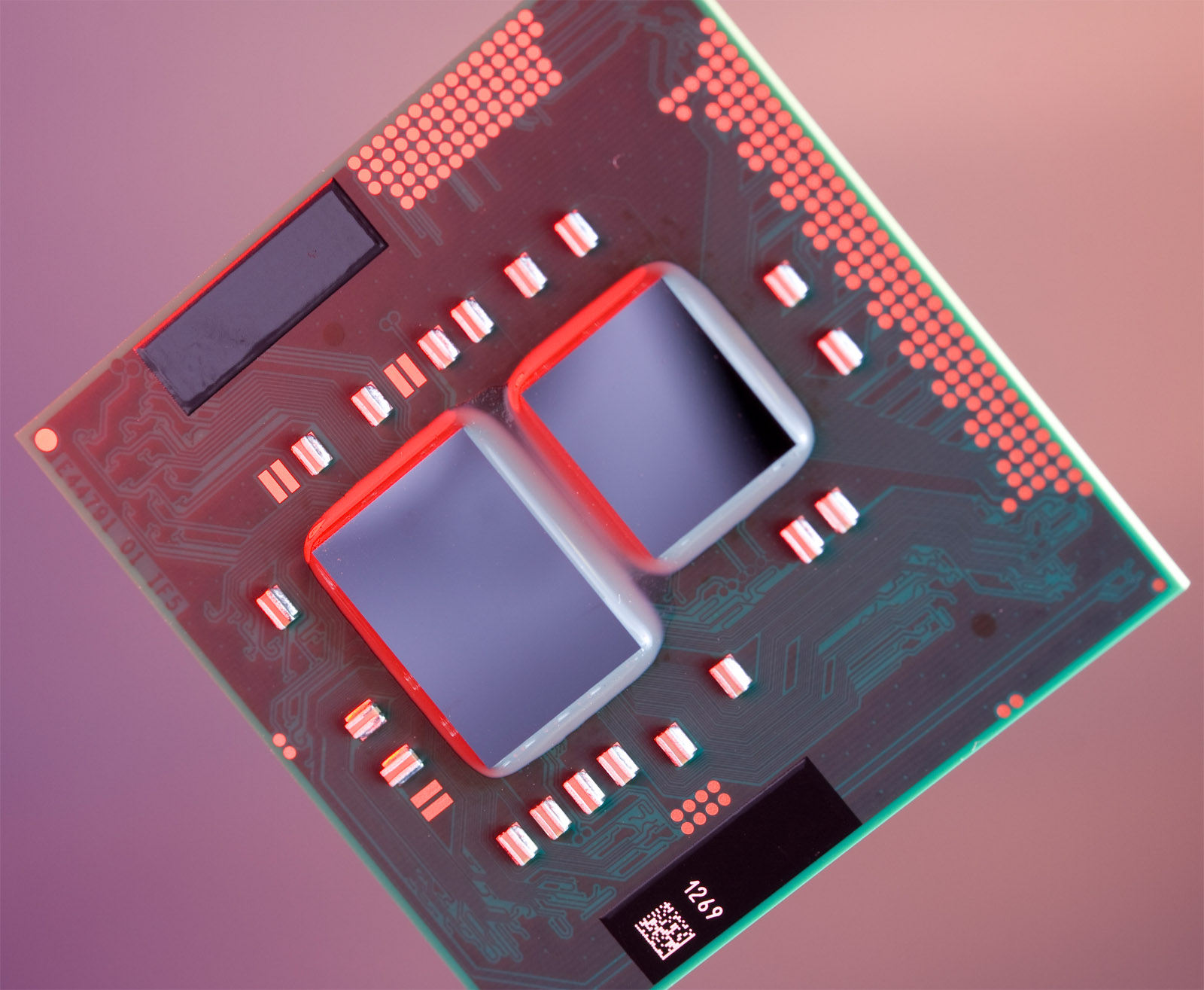Intel’s Mobile Core i5 And Core i3: Arrandale Is For The Rest Of Us
The Arrandale Lineup: Something For (Almost) Everyone
If you’ve already read my Clarkdale coverage, then you know the nuts and bolts of Arrandale. It’s the same dual-die package with a 32nm CPU and 45nm graphics/memory/PCIe controller. The main differences between Arrandale and Clarkdale are: frequencies (of the CPU and GPU), DDR3 memory support, power consumption, packaging, and pricing.
Alright—perhaps there are a few things to talk about here.
There are a total of 11 new mobile processors being launched (as opposed to just six desktop chips). Five are Core i7-600-series CPUs, four are Core i5s, and two are Core i3s. If you’ve read my mini-rant about Intel’s naming in the Clarkdale piece, the same applies in this piece—you’ll truly need a reference chart in order to make any sense of how model names relate to specifications.
The new Core i7s are dual-core chips with Hyper-Threading enabled, sporting 4MB of shared L3 cache, and available in power profiles ranging from 18W to 35W. Forget what you thought determined a Core i7 on the desktop—that’s out the window here, as you'll find Mobile Core i5 and Core i3 processors that run faster than the entry-level Core i7s. Why is this? Only the Core i7-620M is a standard voltage 35W part. The i7-640LM and i7-620LM are medium-voltage components with 25W TDPs. Intel’s i7-640UM and i7-620UM feature 18W TDPs, dropping dual-channel DDR3 memory support from 1,066 MT/s to 800 MT/s. And although their names all differ by just a single letter or number, the five i7s run at base clock rates of 1.06-2.66 GHz and Turbo up to 2.13 GHz to 3.33 GHz.
| Intel Mobile Core i3/5/7 Lineup For 2010 | ||||||||
|---|---|---|---|---|---|---|---|---|
| Row 0 - Cell 0 | Base Clock | Max. Turbo Clock | Cores / Threads | DDR3 Memory | TDP | Package | Pricing | Base Graphics Freq. |
| Core i7-920XM | 2 GHz | 3.2 GHz | 4/8 | 1,333 MT/s | 55W | rPGA BGA | $1,054 | - |
| Core i7-820QM | 1.73 GHz | 3.06 GHz | 4/8 | 1,333 MT/s | 45W | rPGA BGA | $546 | - |
| Core i7-720QM | 1.6 GHz | 2.8 GHz | 4/8 | 1,333 MT/s | 45W | rPGA BGA | $364 | - |
| Core i7-620M | 2.66 GHz | 3.33 GHz | 2/4 | 1,066 MT/s | 35W | rPGA BGA | $332 | 533 MHz |
| Core i7-640LM | 2.13 GHz | 2.93 GHz | 2/4 | 1,066 MT/s | 25W | BGA | $332 | 266 MHz |
| Core i7-620LM | 2 GHz | 2.8 GHz | 2/4 | 1,066 MT/s | 25W | BGA | $300 | 266 MHz |
| Core i7-640UM | 1.2 GHz | 2.26 GHz | 2/4 | 800 MT/s | 18W | BGA | $305 | 166 MHz |
| Core i7-620UM | 1.06 GHz | 2.13 GHz | 2/4 | 800 MT/s | 18W | BGA | $278 | 166 MHz |
| Core i5-540M | 2.53 GHz | 3.06 GHz | 2/4 | 1,066 MT/s | 35W | rPGA BGA | $257 | 533 MHz |
| Core i5-520M | 2.4 GHz | 2.93 GHz | 2/4 | 1,066 MT/s | 35W | rPGA BGA | $225 | 533 MHz |
| Core i5-520UM | 1.06 GHz | 1.86 GHz | 2/4 | 800 MT/s | 18W | BGA | $241 | 166 MHz |
| Core i5-430M | 2.26 GHz | 2.53 GHz | 2/4 | 1,066 MT/s | 35W | rPGA BGA | - | 533 MHz |
| Core i3-350M | 2.26 GHz | - | 2/4 | 1,066 MT/s | 35W | rPGA BGA | - | 533 MHz |
| Core i3-330M | 2.13 GHz | - | 2/4 | 1,066 MT/s | 35W | rPGA BGA | - | 533 MHz |
The four Core i5s hardly fare better. They, too, are dual-core models with Hyper-Threading enabled. But instead of 4MB shared L3 cache, they’re armed with 3MB. Three models are 35W TDP parts, but they span the i5-500M- and i5-400M-series. Why the drop to -400? The only explanation we can see is a less-aggressive Turbo Boost implementation on the entry-level model, highlighted in the chart above. There’s a single 18W low-voltage part in the Core i5 lineup, which drops to DDR3-800 memory support and a 1.06 GHz base clock rate. With thermal headroom to spare, though, the chip can Turbo up to 1.86 GHz.
The two Core i3s are, again, dual-core, Hyper-Threading-equipped CPUs with 3MB shared L3 cache and DDR3-1066-compatible. They’re both 35W chips, which makes sense because neither supports Turbo Boost, so Intel isn’t able to set a low base clock and rely on Turbo to bring performance up when thermal headroom allows.


Pricing across the lineup is aggressive, ranging from $225 to $332 (three of the lowest-end models aren’t being listed at launch).
Get Tom's Hardware's best news and in-depth reviews, straight to your inbox.
Current page: The Arrandale Lineup: Something For (Almost) Everyone
Prev Page Introduction Next Page On-Package Graphics: Arrandale Versus Clarkdale-
burnley14 Well played, Intel. You've been knocking it out of the park lately, keep up the good work.Reply -
I'm looking forward to getting an HP laptop with the Arrandale Core i5 processor in the near future.Reply
-
It's going to be interesting to see the performance/battery time of the LM and UM processors as I'm in the market for a thin-and-light myself.Reply
Performance is good but I'm hoping for a viable update to the CULV offerings of yesterday. -
Computer_Lots Looks like there are finally some replacements for the Atom, at least in efficiency anyway. Too bad the price is currently too high for the UM versions of these processors to make their way into netbooks. I would guess that even the i5-520UM would destroy the Atom in every benchmark, except maybe power consumption.Reply -
HansVonOhain C2D was one of the longest living platforms. But newer tech will replace slower processors.Reply
Keep it up intel. I do hope that AMD will release some new chips that will be able to compete with intel offerings. -
jasperjones ^^^ true that. arrandale will further diminish AMD's role in the mobile processor market. and there's nothing coming up before may.Reply -
Luscious Chris, the dv4 series from HP has a 12-cell extended battery available as well rated for 94Wh 2.2A. Once HP makes the transition to Arrandale, all else being same, you can expect the dv4 to hit 8-10 hours easy.Reply -
cangelini Thanks for the tip Lucious. I didn't have the higher-capacity battery available to test, but I'd absolutely love to see 8-10 hrs. real-world from an Arrandale-based machine.Reply -
Reynod Good bye NVidia ...Reply
That chops them completely out of the mobile graphics market for the masses ... Intel will pay the RIGHT OEM's some "adjustment" just to make sure their "Strategy" is right to ensure AMD's mobile market is thin and restricted to the backwaters of Bejjing.

